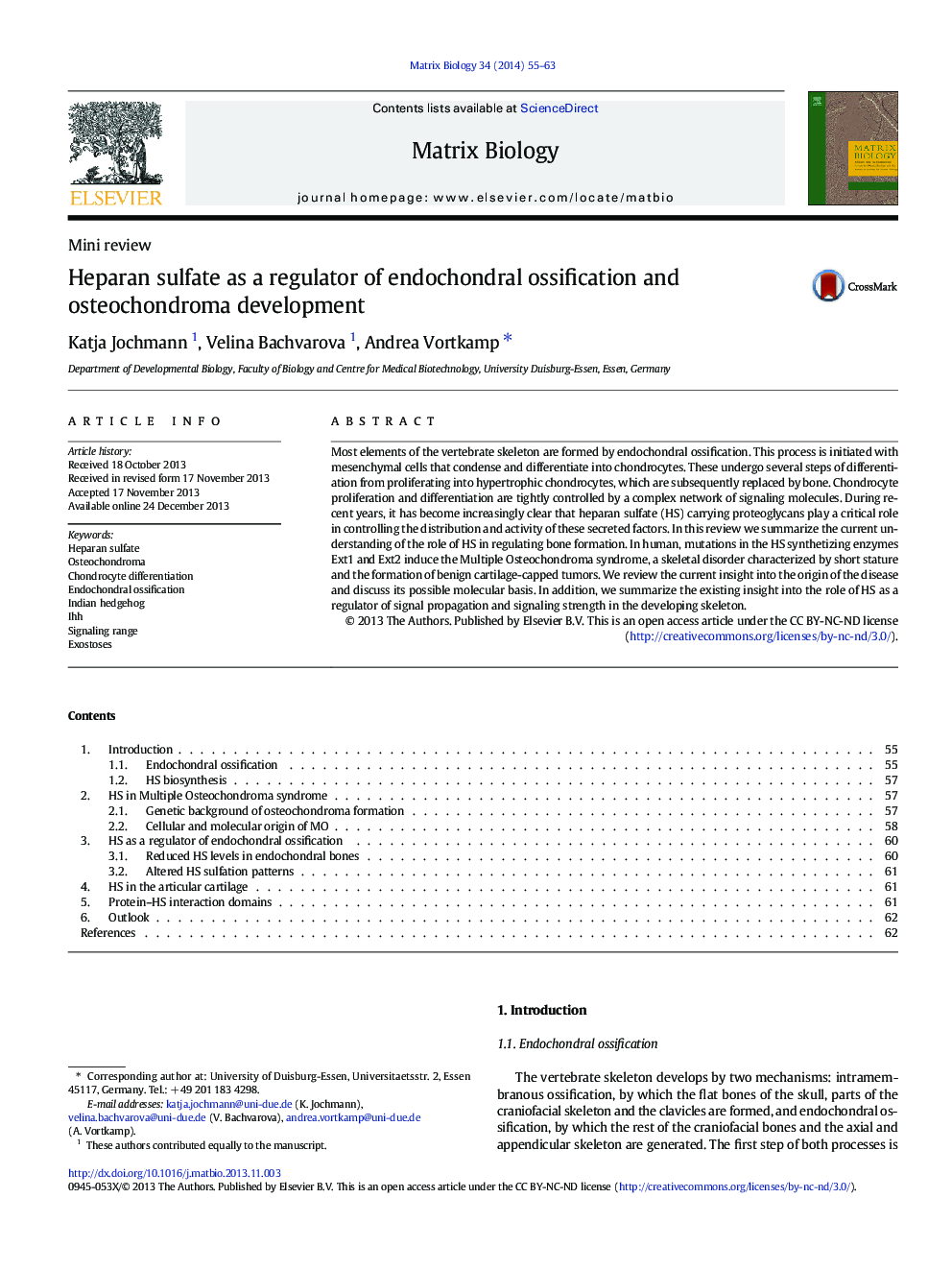| Article ID | Journal | Published Year | Pages | File Type |
|---|---|---|---|---|
| 8455419 | Matrix Biology | 2014 | 9 Pages |
Abstract
Most elements of the vertebrate skeleton are formed by endochondral ossification. This process is initiated with mesenchymal cells that condense and differentiate into chondrocytes. These undergo several steps of differentiation from proliferating into hypertrophic chondrocytes, which are subsequently replaced by bone. Chondrocyte proliferation and differentiation are tightly controlled by a complex network of signaling molecules. During recent years, it has become increasingly clear that heparan sulfate (HS) carrying proteoglycans play a critical role in controlling the distribution and activity of these secreted factors. In this review we summarize the current understanding of the role of HS in regulating bone formation. In human, mutations in the HS synthetizing enzymes Ext1 and Ext2 induce the Multiple Osteochondroma syndrome, a skeletal disorder characterized by short stature and the formation of benign cartilage-capped tumors. We review the current insight into the origin of the disease and discuss its possible molecular basis. In addition, we summarize the existing insight into the role of HS as a regulator of signal propagation and signaling strength in the developing skeleton.
Keywords
Related Topics
Life Sciences
Biochemistry, Genetics and Molecular Biology
Cancer Research
Authors
Katja Jochmann, Velina Bachvarova, Andrea Vortkamp,
